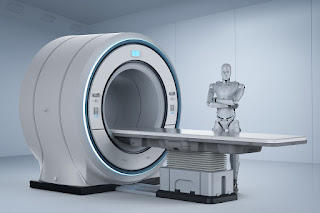Multiple sclerosis (MS) is a condition in which the body’s immune system attacks the protective covering (myelin) surrounding the nerves of the central nervous system (CNS). There’s no single definitive test that can diagnose MS. Diagnosis is based on symptoms, clinical evaluation, and a series of diagnostic tests to rule out other conditions.
A type of imaging test called an MRI scan is an important tool in diagnosing MS. (MRI stands for magnetic resonance imaging.)
MRI can reveal telltale areas of damage called lesions, or plaques, on the brain or spinal cord. It also be used to monitor disease activity and progression.
If you have symptoms of MS, your doctor may order an MRI scan of your brain and spinal cord. The images produced allow doctors to see lesions in your CNS. Lesions show up as white or dark spots, depending on the type of damage and the type of scan.
MRI is noninvasive (meaning nothing is inserted into a person’s body) and doesn’t involve radiation. It uses a powerful magnetic field and radio waves to transmit information to a computer, which then translates the information into cross-sectional pictures.
Contrast dye, a substance that’s injected into your vein, can be used to make some types of lesions show up more clearly on an MRI scan.
Although the procedure is painless, the MRI machine makes a lot of noise, and you must lie very still for the images to be clear. The test takes about 45 minutes to an hour.
It’s important to note that the number of lesions shown on an MRI scan doesn’t always correspond to the severity of symptoms, or even whether you have MS. This is because not all lesions in the CNS are due to MS, and not all people with MS have visible lesions.
MRI with contrast dye can indicate MS disease activity by showing a pattern consistent with inflammation of active demyelinating lesions. These types of lesions are new or getting bigger due to demyelination (damage to the myelin that covers certain nerves).
The contrast images also show areas of permanent damage, which can appear as dark holes in the brain or spinal cord.
Following an MS diagnosis, some doctors will repeat an MRI scan if troubling new symptoms appear or after the person begins a new treatment. Analyzing the visible changes in the brain and spinal cord may help assess current treatment and future options.
Your doctor may also recommend additional MRI scans of the brain, the spine, or both at certain intervals to monitor disease activity and progression. The frequency with which you need repeat monitoring depends on the type of MS you have and on your treatment.
Stay informed with MS news and information - Sign-up here
For MS patients, caregivers or clinicians, Care to chat about MS? Join Our online COMMUNITY CHAT




